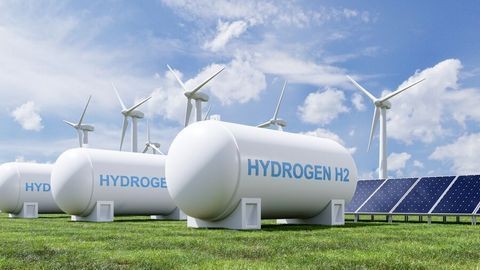The Supreme Court Stays EPA's Clean Power Plan
Client Alert | 3 min read | 02.11.16
On Tuesday, in a blow to the Obama Administration's climate change policy platform, the U.S. Supreme Court granted several applications for a stay of the U.S. Environmental Protection Agency's (EPA) Clean Power Plan, the "Carbon Pollution Emission Guidelines for Existing Stationary Sources: Electric Utility Generating Units," 80 Fed. Reg. 64,662 (Oct. 23, 2015). Five justices voted to grant the application – Chief Justice Roberts along with Justices Scalia, Thomas, Alito, and Kennedy – while Justices Ginsburg, Breyer, Sotomayor, and Kagan would have denied the application.
The Court's ruling comes just weeks after a three-judge panel of the United States Court of Appeals for the D.C. Circuit denied motions for a stay. The Court's decision to intervene is unprecedented: it marks the first time the Court has stayed an agency rule while judicial review by a lower court is ongoing, and it suggests that a majority of the Court's justices has significant doubts regarding the legality of the rule. While the Court's decision is not a ruling on the merits, it is likely to weigh heavily on the D.C. Circuit panel as the lower court considers the case.
Effects of the Stay
The stay will remain in effect pending the D.C. Circuit's ruling on the merits, and the high court's order also specifies that the stay will continue pending the outcome of any petition for certiorari or Supreme Court review.
The stay renders the September 6, 2016, due date for initial state plan submissions a dead letter. There is no possibility that both the D.C. Circuit and the Supreme Court will be able to complete their consideration of the rule by that date. The stay will likely also mean the September 6, 2018, deadline for filing final compliance plans will slip, even if the rule is eventually upheld, though it is not clear by how much. It is harder to predict the effect of the stay on the 2022 - 2030 interim compliance window, given that it is a number of years off.
Though the stay makes the rule's deadlines presently unenforceable, it does not prohibit States from continuing their work on initial or final compliance plans, and EPA has announced that it intends to continue working with States that wish to do so. Moreover, the stay does not appear to have any direct effect on EPA's authority to finalize the model state trading rules or to continue work on a federal plan that would apply if the rule is eventually upheld.
While most States that challenged the rule are unlikely to move forward with compliance plans, other States may choose to do so notwithstanding the stay. Accordingly, regulated entities should consider discussing with their state regulators what their plans are going forward in light of the Court's ruling.
Posture of the Litigation at the D.C. Circuit
The D.C. Circuit has established an expedited review schedule, with oral argument scheduled for June 2 and possibly June 3, 2016. The court has given no indication those dates will change. Before the Supreme Court's action, many expected the D.C. Circuit would issue a decision before the rule's September 6, 2016, deadline for initial state plan submissions. The stay removes that pressure point, and the Supreme Court's clear concern about the rule may prompt the D.C. Circuit to take additional time to carefully think through any decision. Finally, its decision on Tuesday suggests that the Supreme Court is ultimately likely to review the D.C. Circuit's decision, no matter what that decision might be.
Impact on U.S. Commitments Internationally
In the near term, the stay will have no legal impact on the Obama Administration's voluntary commitment under the Paris Agreement to reduce GHGs by 26-28 percent by 2025. The Paris Agreement was concluded last December and all participating nations intend to formally sign on April 22, 2016.
Contacts
Insights
Client Alert | 2 min read | 12.19.25
GAO Cautions Agencies—Over-Redact at Your Own Peril
Bid protest practitioners in recent years have witnessed agencies’ increasing efforts to limit the production of documents and information in response to Government Accountability Office (GAO) bid protests—often will little pushback from GAO. This practice has underscored the notable difference in the scope of bid protest records before GAO versus the Court of Federal Claims. However, in Tiger Natural Gas, Inc., B-423744, Dec. 10, 2025, 2025 CPD ¶ __, GAO made clear that there are limits to the scope of redactions, and GAO will sustain a protest where there is insufficient evidence that the agency’s actions were reasonable.
Client Alert | 7 min read | 12.19.25
In Bid to Ban “Woke AI,” White House Imposes Transparency Requirements on Contractors
Client Alert | 5 min read | 12.19.25
Navigating California’s Evolving Microplastics Landscape in 2026
Client Alert | 19 min read | 12.18.25
2025 GAO Bid Protest Annual Report: Where Have All the Protests Gone?



